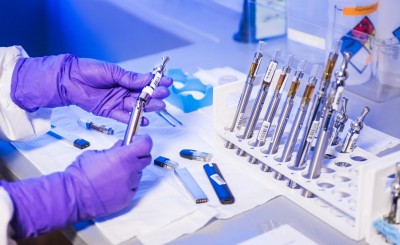Nature & Environment
How Insects Move Without Muscles: Crawling Bugs Inspire Robotic Limbs
Catherine Griffin
First Posted: Jul 18, 2013 02:35 PM EDT
First Posted: Jul 18, 2013 02:35 PM EDT
Insects creep and crawl against the ground, skitter along tree branches and flit through the air. These movements, though, aren't just powered by muscles. Now, scientists have figured out exactly how insects move, which may provide engineers with new ways to improve the control of robotic and prosthetic limbs.
Previous studies showed that insect movements could be generated by the spring-like properties of limbs. In order to examine what other forces might be at play, the scientists looked at the literature and examined several different types of insect legs where the extensor and flexor muscles are closely balanced in size and strength, or where the flexor is stronger than the extensor.
"Our work set out to identify how the biomechanical properties of the limbs of a range of insects influence relatively slow movements such as those that occur during walking, scratching or climbing," said Tom Matheson, one of the researchers, in a news release. "The surprising result was that although some movements are influenced by properties of the muscles and tendons, other movements are generated by forces that arise from within the joints themselves. Even when we removed all of the muscles and associated tissues from a particular join at the 'knee' of a locust, the lower part of the limb (the tibia) still moved back towards a midpoint from extended angles."
In other words, these passive joint forces served to return the limb back toward a preferred resting position. These passive movements differed in limbs that have different behavioral roles and different musculature, suggesting that the joint structures are specifically adapted to complement muscle forces.
"We found that the passive joint forces really do counterbalance the stronger of the flexor or extensor muscle in the animals and legs we looked at," said Jan Ache, one of the researchers, in a news release. "In the horsehead grasshopper, for example, passive joint forces even differ between the middle legs (which are primarily used for walking) and the hind legs (which are adapted for jumping), even in the same individual animal. In both pairs of legs, the passive joint forces support the weaker muscle."
The findings reveal how insects control their movements. They use a close interplay of neuronal control and clever biomechanical tricks. The new research could allow scientists to employ biomimicry in the future, using the findings to create machines that employ the same techniques.
The findings are published in the journal Current Biology.
See Now: NASA's Juno Spacecraft's Rendezvous With Jupiter's Mammoth Cyclone



